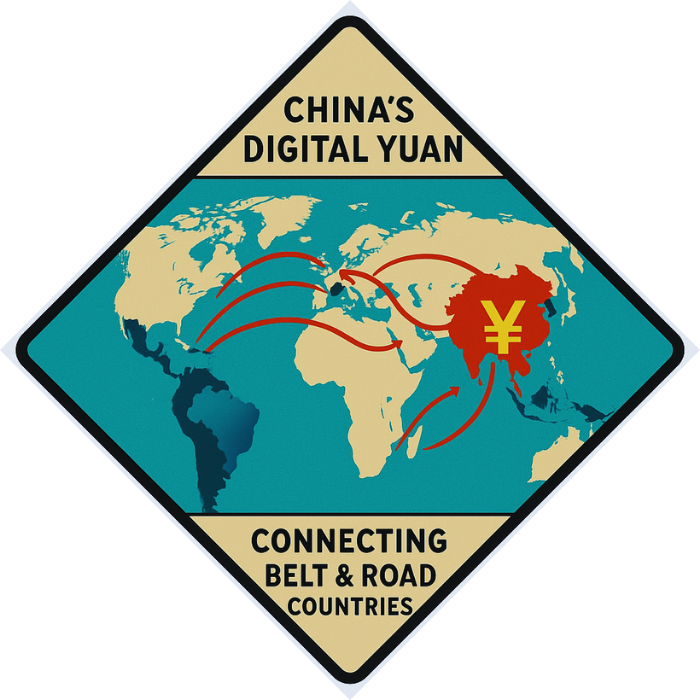Introduction
The global financial system is undergoing a digital transformation, and China is leading the charge with the Digital Yuan (e-CNY)—its central bank digital currency (CBDC). Unlike cryptocurrencies such as Bitcoin or Ethereum, the Digital Yuan is issued and backed by the People’s Bank of China (PBoC). It combines the benefits of digital payments with the authority and stability of a state-controlled currency.
As China accelerates its adoption, the Digital Yuan is not only transforming domestic transactions but also shaping the global debate on the future of money. From smart contracts to cross-border payments, the e-CNY is at the heart of China’s vision for a digital-first economy.
What is the Digital Yuan?
The Digital Yuan (also called e-CNY) is a digitized form of cash (M0), designed to coexist with banknotes and coins. Unlike decentralized cryptocurrencies, it is fully centralized and controlled by the Chinese central bank.

Key features include:
Legal Tender: Just like physical cash, the Digital Yuan is recognized for all transactions.
No Interest Bearing: Unlike deposits, it doesn’t earn interest—reducing risks of destabilizing bank balances.
Dual-Offline Transactions: Payments can occur without internet connectivity, enabling financial inclusion in remote areas.
Programmable Money: Built-in smart contract features allow conditional payments, subsidies, or targeted stimulus.
Rapid Adoption Across China
China has been piloting the Digital Yuan since 2020 in cities like Shenzhen, Suzhou, Chengdu, and Beijing, and has since expanded usage nationwide.
Everyday Transactions
Citizens can pay with e-CNY at supermarkets, ride-hailing apps, utility services, and even the Beijing Subway system. QR-code integration ensures smooth compatibility with platforms like WeChat Pay and Alipay, China’s dominant digital wallets.
Government Services
The Digital Yuan is being used to distribute government subsidies, tax refunds, and disaster relief payments. This reduces fraud and ensures funds reach recipients instantly.
E-Commerce
Platforms like JD.com have accepted Digital Yuan for online shopping, proving its scalability for high-volume transactions.
Smart Transactions: Beyond Simple Payments
The real innovation of the Digital Yuan lies in programmability. By embedding smart contract functionality, transactions can follow specific rules or conditions:

Targeted Subsidies
The government can issue e-CNY that can only be spent on food, fuel, or healthcare—ensuring effective use of aid.Automatic Compliance
Businesses can automate tax payments or regulatory reporting, reducing paperwork and improving transparency.Cross-Border Settlements
In trials with Hong Kong, Thailand, and the UAE, the Digital Yuan has been tested for international trade settlements, bypassing traditional intermediaries like SWIFT.IoT Payments
Smart machines and autonomous vehicles can make micropayments automatically using embedded e-CNY wallets.

Benefits Driving Adoption
Financial Inclusion: Dual-offline capability allows use in rural areas without stable internet.
Transparency: Transactions can be monitored, reducing corruption and money laundering.
Efficiency: Eliminates middlemen in transactions, lowering costs for consumers and businesses.
Global Influence: Positions China as a leader in setting digital currency standards.
Challenges & Concerns
Despite its benefits, the Digital Yuan raises important questions:
Privacy Risks: Since transactions are traceable, critics warn of potential government overreach into personal financial data.
Competition with Banks: As more money shifts to e-CNY, banks may lose deposits, affecting lending capacity.
Global Adoption: For cross-border use, foreign governments may resist adoption due to sovereignty and geopolitical concerns.
User Habits: WeChat Pay and Alipay are deeply entrenched; persuading users to switch remains a challenge.
Global Implications
China’s rollout of the Digital Yuan is reshaping discussions about the future of money. Other countries, including the U.S., EU, and India, are exploring their own CBDCs, partly motivated by China’s rapid progress.
If the Digital Yuan becomes widely adopted internationally, it could reduce reliance on the U.S. dollar in trade, particularly in regions aligned with China’s Belt and Road Initiative (BRI). This has significant geopolitical implications, as financial influence increasingly becomes a tool of global competition.
The Road Ahead
The Digital Yuan is still in its early stages but expanding quickly. Key future trends may include:
Wider Integration with IoT: From smart cars paying tolls to appliances buying electricity.
Cross-Border CBDC Networks: Regional digital currency collaborations linking Asia, Africa, and the Middle East.
AI-Driven Risk Monitoring: Combining e-CNY data with AI to predict and prevent fraud or systemic risks.
Global Standard Setting: China influencing international rules for digital finance.
Conclusion
The Digital Yuan is more than just a new payment method—it’s a reimagining of money itself. By blending programmability, transparency, and efficiency, it offers a model for digital-first economies of the future. Yet, its success will depend on balancing innovation with trust, privacy, and international collaboration.
As China continues to lead in this domain, the Digital Yuan may well become a blueprint for how nations worldwide approach the coming era of smart, programmable transactions.






